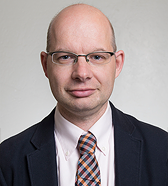 Scientist-in-Residence
Scientist-in-Residence
[email protected]
Monterey, CA
831.647.4638
Background
Dr. Ferenc Dalnoki-Veress is Scientist-in-Residence at CNS and holds an MSc and PhD in high energy physics from Carleton University, Canada, specializing in ultra-low radioactivity background detectors and has professional experience in the field of astroparticle physics, primarily neutrino physics.
He has been involved in several major discoveries in the field of neutrino physics and has worked on several international collaborations in Canada, Germany, Italy, and the United States (see below) including the Sudbury Neutrino Observatory (SNO), Double Chooz and Borexino experiments. He was a member of the SNO Collaboration that won the 2015 Nobel Prize in physics. He is also a laureate along with his team of the 2016 Breakthrough Prize in Physics.
He has contributed to more than 40 articles in refereed and non-refereed journals.
Science in the Public Interest
After a rewarding career as an experimental physicist (see below) in academia, he has switched fields to physics in the public service. After a postdoctoral position at Princeton University’s Physics Department in 2008, he became a Professional Specialist at the Princeton Program on Science and Global Security (Woodrow Wilson School of International and Public Affairs) working on the development of simulations of novel detection schemes for checking the declared HEU inventories of naval-reactor cores.
He joined CNS in 2009, and has been focusing on the proliferation of fissile materials, nuclear spent fuel management, nuclear reactor safety, emergency preparedness and verification of nuclear disarmament.
Dr. Dalnoki-Veress is a principal investigator (PI) of several projects and has taken a leadership role in one of the 4 projects of the Center for Disease Control’s PERRC (Preparedness and Emergency Response Research Center) in collaboration with the UC Berkeley Center for Infectious Disease & Emergency Readiness (CIDER).
His recent work analyzing radionuclide data from the Fukushima crisis has been quoted in Nature Magazine, New Scientist, Time Magazine, and newspapers. He has contributed to a Q&A in Time Magazine’s Ecocentric blog on the hazards of spent nuclear fuel safety and security.
Educational Initiatives
Dr. Dalnoki-Veress recognizes that knowledge of science is crucial for understanding weapons of mass destruction and the security threats they pose. He has spearheaded several initiatives to promote science education at MIIS including a course entitled “Science and Technology for Weapons of Mass Destruction,” a requirement for all incoming nonproliferation and terrorism students.
Dr. Dalnoki-Veress, Dr. Jim Williams from the International Environmental Policy (IEP) department and Dr. Patricia Lewis established a science boot camp course taught by Mark Bishop (“Atoms First” textbook) which prepares students for science related courses at MIIS. The unique IEP-CNS partnership launched a cross-program seminar in the fall semester 2011 entitled “After Copenhagen and Fukushima: The Nuclear Future in a Climate and Security Constrained World”.
Dr. Dalnoki-Veress also teaches/co-teaches several courses where science meets policy, such as “Nuclear Renaissance and Nonproliferation,” “Nuclear Treaty Verification,” and the workshop “Nuclear Weapons and Technology”.
Ultra-Low Background and Neutrino Physics
During the tenure of Dr. Dalnoki-Veress’s research career, he has been involved in several major discoveries in the field of neutrino physics. Neutrino physics is the study of indivisible particles that have significant roles in understanding stellar (star) energy production, the nature of matter, and cosmology.
In 2002 his work in Canada at the Sudbury Solar Neutrino Observatory (SNO) contributed to the first definitive proof that neutrinos have finite mass. The SNO result was ranked as the top three scientific breakthroughs of 2002 for Science Magazine, Discover Magazine, and the American Institute of Physics.
From 2003 until 2005 he worked at the Max Planck Institute for Nuclear Physics in Heidelberg, Germany to investigate further low background techniques in collaboration with participants from the Space Science Division, E. O. Hulbert Center for Space Science of the United States Naval Research Laboratory. He was a member of the Double Chooz project, an international collaboration to measure anti-neutrinos produced by fission in nuclear reactors.
In 2005 he joined Princeton University to work at the Gran Sasso National Laboratory near L’Aquila, Italy on the Borexino solar neutrino experiment. His efforts contributed to the first real-time measurement of low energy solar neutrinos heralded in 2007 by Nature magazine as a “triumph for experimenters”. Note that techniques developed in the interests of neutrino and low background physics rely on measuring extremely rare signals just as often the case in the fields of nuclear forensics, nuclear archaeology, nuclear safeguards monitoring and the detection of radioactive gases from nuclear tests.
CNS Work
- OP64: Nuclear Verification’s Holy Grail: Verifying Nuclear Warheads — a new approach
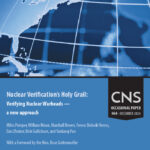 This paper presents verification methods, technologies, and measures that may be used to design a verification protocol for any type of warhead stockpile agreement.
This paper presents verification methods, technologies, and measures that may be used to design a verification protocol for any type of warhead stockpile agreement. - CNS Seminar on the Intersection of Artificial Intelligence and WMD Nonproliferation
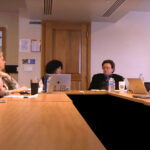 The seminar showcased the wide range of CNS expertise and its collaborative relationships with industry.
The seminar showcased the wide range of CNS expertise and its collaborative relationships with industry. - Charting a roadmap for multiparty confidence and security building measures, risk reduction, and arms control in the Indo-Pacific
 This work contains contributions by CNS’s Miles Pomper, Allison Berke, Ferenc Dalnoki-Veress, and George M. Moore.
This work contains contributions by CNS’s Miles Pomper, Allison Berke, Ferenc Dalnoki-Veress, and George M. Moore. - Concrete Alternative: A Better Solution for Fukushima’s Contaminated Water Than Ocean Dumping
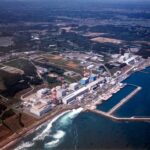 The old adage that “dilution is the solution to pollution” no longer holds true in the strained ocean environment of 2023.
The old adage that “dilution is the solution to pollution” no longer holds true in the strained ocean environment of 2023. - CNS Nonproliferation Short Course Video Resource Library
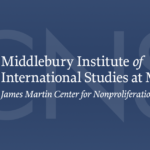 A subset of CNS videos intended to supplement CNS organized short courses with the aim of allowing course participants to obtain detailed knowledge on the topics listed.
A subset of CNS videos intended to supplement CNS organized short courses with the aim of allowing course participants to obtain detailed knowledge on the topics listed. - Putin’s War with Ukraine: Voices of CNS Experts on the Russian Invasion
 A compendium of CNS expert analysis and commentary on the nuclear ramifications of the war, as well as educational materials for expert and general audience.
A compendium of CNS expert analysis and commentary on the nuclear ramifications of the war, as well as educational materials for expert and general audience. - OP #53: Public-health Engagement with North Korea in the COVID-19 Era
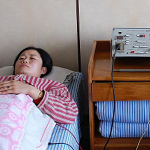 A new program of humanitarian aid will be needed to permit a safe reopening, and potentially also to address the human consequences of the protracted closure.
A new program of humanitarian aid will be needed to permit a safe reopening, and potentially also to address the human consequences of the protracted closure. - OP #51: The Final Stretch: Tackling Remaining HEU Challenges
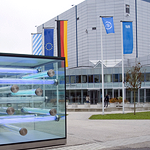 HEU represents a highly attractive target for terrorists and proliferators.
HEU represents a highly attractive target for terrorists and proliferators. - Masters Students in Dual Degree Program Defend Theses
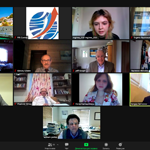 Students from Russia, the United States and South Korea presented their final papers as the result of their studies in 2019-2021.
Students from Russia, the United States and South Korea presented their final papers as the result of their studies in 2019-2021. - Modeling the Food Supply Chain During the Pandemic
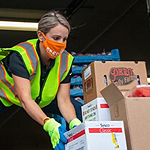 Dr. Dalnoki-Veress developed a hypothetical model to build resilient networks that can serve underserved communities during challenging times.
Dr. Dalnoki-Veress developed a hypothetical model to build resilient networks that can serve underserved communities during challenging times.
Selected Publications
- Direct measurement of the 7 Be solar neutrino flux at Borexino, C. Arpesella et al. (Borexino Collaboration). 2008. 6pp. Phys.Rev.Lett.,101:091302,2008.
- First real time detection of Be7 solar neutrinos by Borexino, C. Arpesella et al., Physics Letters B, Volume 658, Issue 4, 3 January 2008, Pages 101-108 e-Print: arXiv:0708.2251.
- A Germanium Spectrometer for Routine Characterization of Samples with the Sensitivity of Double Beta Decay Spectrometers, G. Rugel et al. Nuclear Physics B – Neutrino 2004 Proceedings Supplements, Volume 143, June 2005, Page 564, 2005.
- Direct Evidence for Neutrino Flavor Transformation from Neutral-Current Interactions in the Sudbury Neutrino Observatory, Q.R. Ahmad et al. (The SNO Collaboration), Phys.Rev.Lett., 89, 011301, 2002.
- Measurement of Day and Night Neutrino Energy Spectra at SNO and Constraints on Neutrino Mixing Parameters, Q.R. Ahmad et al. (The SNO Collaboration), Phys.Rev.Lett., 89, 011302, 2002.
- Measurement of the Rate of νe + d → p + p + e − Interactions Produced by 8 B Solar Neutrinos at the Sudbury Neutrino Observator, Q.R. Ahmad et al. (The SNO Collaboration) Phys.Rev.Lett., 87, 071301, 2001.
